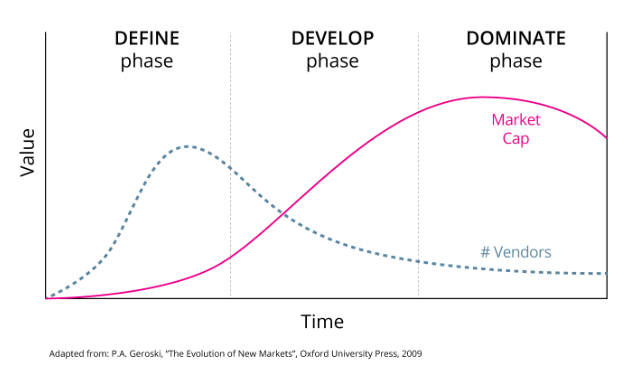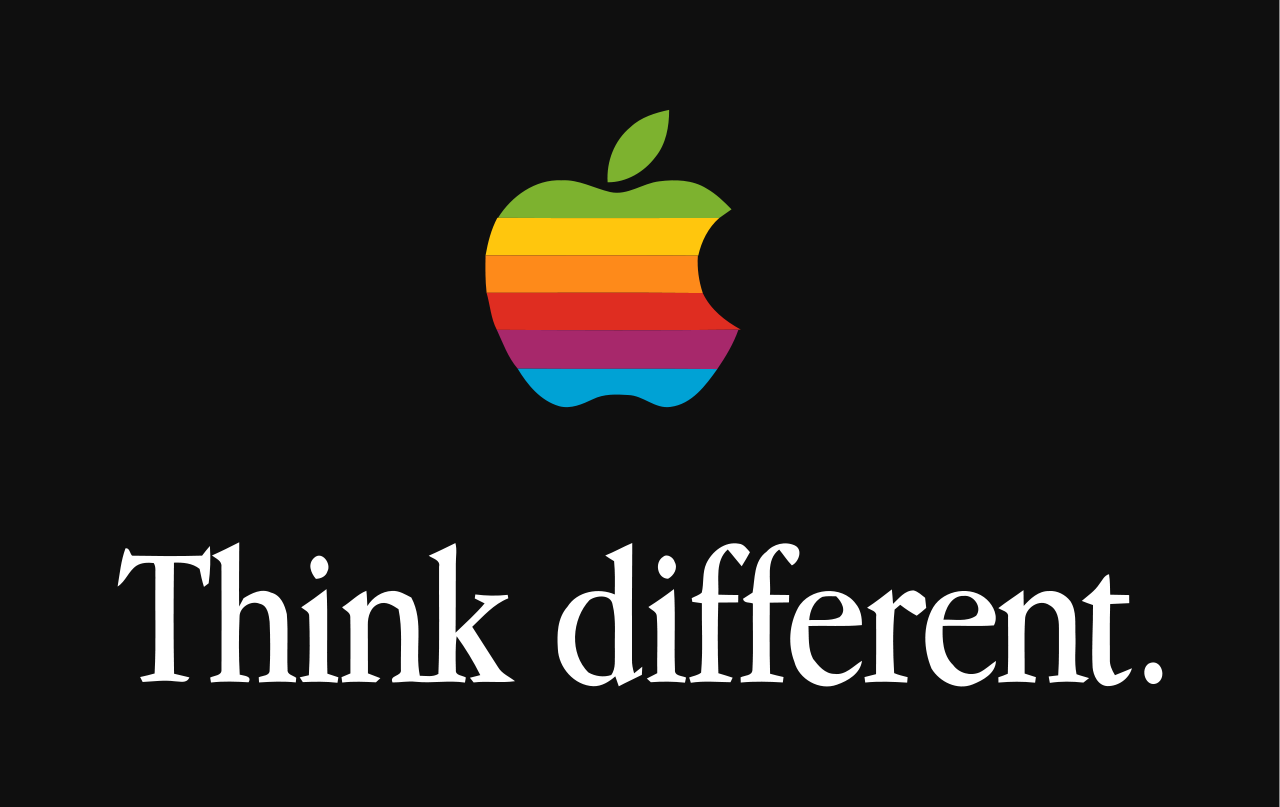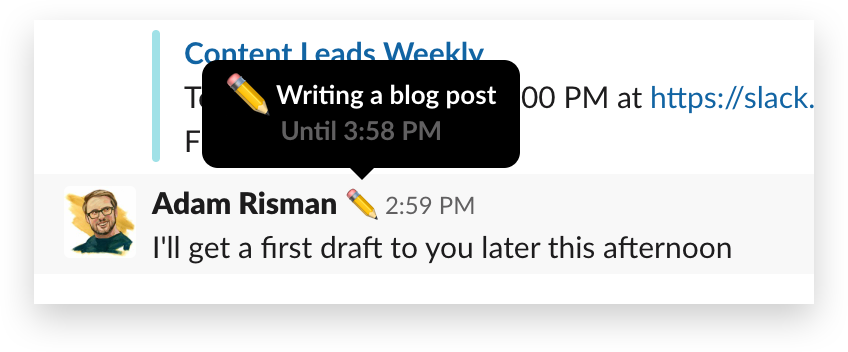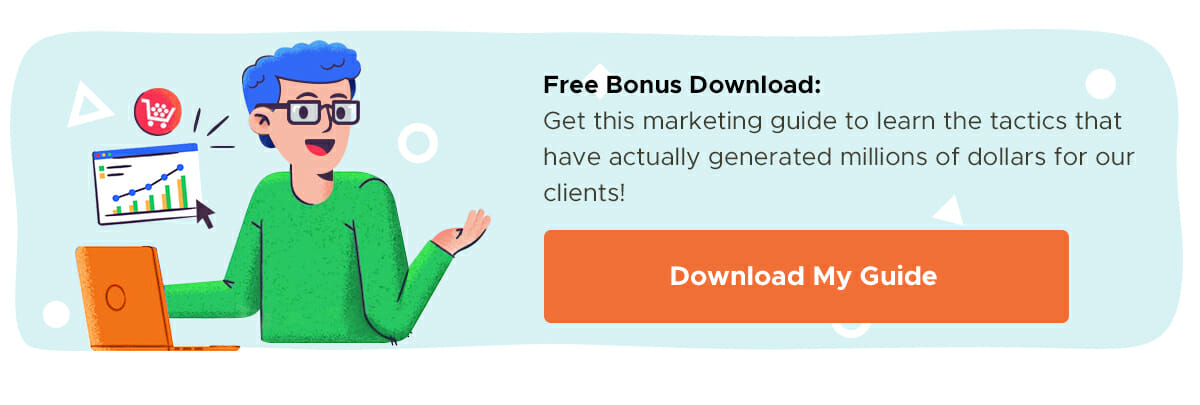Traditional marketing has been evolving so fast in the last couple of years. Nowadays, it’s not about beating everyone else at the game – it’s about creating your own game. This relatively new marketing strategy is known as category design.
In the age of digital disruption and rapid innovation, category design is the ultimate business strategy that allows a company to create and develop entirely new categories of products and services. And, more often than not, the creators become the category kings and queens.
In this article, we’ll explore category design 101, showing you how to implement it so that you can succeed in the age of disruptive innovation. First and foremost, let’s start by defining category design.
What Is Category Design in Marketing?
Category design is a business strategy that focuses on creating a new marketing category, which can then be monetized and monopolized before competitors can enter the space. By establishing a new niche that is free of competition, your company has an excellent chance of dominating it:

The term “category design” found its way into mainstream marketing consciousness in 2016, with the release of the book Play Bigger. The Play Bigger LLC co-founders, Al Ramadan, Dave Peterson and Christopher Lochhead, explore this innovative business strategy with writer Kevin Maney. In the book, they note how many big companies find success by creating new categories of products and services, rather than competing in existing markets.
Related Content:
- Make Your Product Sing: The Importance of UX Writing
- How to Turn a Minimum Viable Product into a Booming Business
- 5 Hot Trends in Online Product Marketing You Can’t Ignore
3 Notable Category Design Examples
We can see examples of category design throughout history. We’ll show you how to implement category design later, but for now, you can get a better idea of how this strategy works by considering these famous use cases:
1) Birdseye: Frozen Foods
Clarence Birdseye had a tough audience to crack in the 1920s. People all over the world preferred to eat fresh food whenever possible, so the idea of buying frozen food was a hard sell at first. However, once Clarence convinced people of the benefits of having frozen food when no crops could grow in winter, as well as the superior quality of food that is frozen quickly, the company sales skyrocketed.
In 2015, the parent company was sold for €2.6B (or USD $2.8B) and Clarence is now thought of as the founder of the modern frozen food industry:

2) Honey: Coupon App
For many years, homemakers would busy themselves with clipping discount coupons from newspapers, which would then dictate their shopping at the local stores. With the rise of e-commerce, people grew tired of looking for coupons, so Ryan Hudson developed an app to bring the coupons to the consumers.
Having saved customers $750 million and counting, the Honey app works as a browser plugin, instantly scouring the web to find discount codes whenever you reach the checkout of an online store:
3) Netflix: Streaming Media
Blockbuster, a brick-and-mortar video rental store, had been the go-to spot for renting movies for decades. But when Netflix began offering door-to-door mail-order delivery, the movie rental game changed. Unfortunately, the former Blockbuster CEO didn’t see it coming, famously missing out on an opportunity to acquire Netflix, which was in trouble because of the dot-com crash, for $50M.
Before long, Netflix executed category design to perfect effect, crushing Blockbuster with its streaming-media platform that could offer people instant cinematic gratification without leaving their homes:

Related Content:
- 12 Ways to Use Machine Learning in Digital Marketing
- 11 Companies That Are Doing Mobile Advertising Right in 2019
3 Reasons Why Category Design Is an Important Strategy
So, what are the benefits of category design in marketing? We’ve touched on a couple already, but let’s explore the real value of category design in more detail. Here are several big advantages of this innovative business strategy:
1) You Understand the Game
Think about traditional marketing for a moment. Whatever space you're in, you're likely learning from and following in the footsteps of existing brands. As such, you didn't design this space. It's not yours so, in effect, you are just a game player, rather than a game changer or innovator.
By using category design in marketing, you design your own space – and the crucial aspect is that you understand it better than anybody. This tactic enables you to attract the perfect audience and get to know your customers before anybody else has a chance.
2) You Become the Category King/Queen
Studies show that category leaders who “create a new category typically capture 76% of the total category market capitalization.”
This strategy amounts to a winner-takes-all scenario, where the creator of any new market is usually the one who profits most. Harvard Business Review recently reported how the CEO of SAP cited this statistic after the company spent $8 billion on the online research firm Qualtrics – 14 times the projected annual sales of SAP.
Category Design: If you want to do well in a market, get in early. If you want to dominate a market, create it first.
Click To Tweet
3) You Attract New Audiences
Today, you can see many category design examples at play, with digital giants like Uber, Airbnb, Amazon and Apple all holding the torch in their respective industries.
The one thing that these companies have in common is that they presented consumers with a new solution that they didn’t even know they needed.
Category design makes consumers see markets in a new light, viewing the older, traditional solutions as outdated, inefficient or troublesome. By offering people a new way of doing things, you're solving problems that they didn’t know they had – and thus creating loyal product believers and brand ambassadors.
Apple, of course, not only mastered this idea, but created an entire mantra around it with their “Think different” logo, changing how people saw the world, themselves and their needs:

Related Content: Figure Out What Works and Focus On It Until You’ve Mastered It
What Are the Drawbacks of Category Design in Marketing?
While the value of category design is clear, it’s not without its shortcomings. As you learn how to implement category design, you may encounter the following problems:
Pressure to Lead
We’ve mentioned that usually the company that creates the category becomes its leader. However, that’s not set in stone. Sometimes the innovators get left in the dust.
If you have a ground-breaking idea, you can be sure that people will try and imitate it. Just as Blockbuster was too slow to corner the mail-service and online movie rental market, many entrepreneurs have lost out because they didn’t follow up their initial category design idea with a solid strategy that kept them ahead of the competitors.
Learn More: 37 Life-Changing Leadership Books You Need to Read ASAP
No Playbook
When you create new categories of products and services, you walk off the beaten path. In uncharted territory, you have no guide ropes, no rules and no mentors or success stories to keep you on course. As Gainsight CMO Anthony Kennada says:
“If you're creating a category, there's no existing playbook you can turn to.”
For many marketers, this is exciting. However, others can flounder, making the mistake of applying traditional practices and standards to a new market that demands innovative thinking.
Too Risky
Netflix CEO Reed Hastings said:
“As an entrepreneur, you have to feel like you can jump out of an airplane because you're confident that you'll catch a bird flying by.”
Sometimes, the bird doesn’t appear and innovators hit the ground hard. When you’re trying to change how people think, sell a product they’ve never considered, and compete with established brands who already have a viable solution, the risk of failure is high.
Learn More: 10 Lessons New Entrepreneurs Can Learn from Steve Chou’s Multiple Six-Figure Successes
Category Design 101: How Marketers Can Turn Category Design to Their Advantage
Okay, now that you’ve got your head around the definition of category design, seen a few examples and learned the drawbacks and benefits of category design in marketing, let’s show you how it’s done:

There are seven steps to the basic business strategy which, in theory, you can apply to disrupt virtually any market. Here’s how to implement category design:
Identify the Problem and Your Unique Insight
To kick things off, you must identify what it is that you believe the world is missing. Articulating the problem and your unique solution will act as the foundation upon which you can make disruptive innovation happen. What problem does an industry face for which there is no current answer? How can you fix it?
For example, Airbnb saw traditional hotels and booking platforms as clunky and cold. The founders wanted to offer people a more personable accommodation experience – and wound up transforming the hospitality industry. Much like the Netflix/Blockbuster situation, I imagine that many other companies thought Airbnb was a little nuts.
So if people are going to see your new marketing category, you must frame the problem and your solution in a way that they will understand and, more importantly, desire.
After pinpointing some issues with taxi services, Uber appealed to the masses by making vehicles-for-hire easy to book, quick to arrive and convenient to pay for whenever and wherever you needed it.
Related Content:
- 10 Lessons Startups Can Learn from Uber’s Growth
- Analysis of 1 Million Backlinks: Airbnb
- How to Market a Unique Product When There’s No Current Product-Market Fit (podcast)
Choose Your Category Name
With a new category, comes a new market name. Typically, this name comprises the market type, the nature of the problem, and the audience. It’s not unusual for a category name to evolve over time as the category continues to develop.
For example, since their inception, Uber and Lyft have been known as transportation network companies (TNCs), tech-enabled transport and, now, rideshare companies.
Detail Your Category Blueprint and Ecosystem Map
Your category ecosystem offers a holistic picture of how developers, business partners, suppliers and customers will work together. With this map and a category blueprint that explains how you will solve this massive problem in the market, you can take charge of the space, fostering brand loyalty around your brand and its unique products and services. In other words, you will have product advantage:

The CEO of Salesforce, Marc Benioff, is lauded as a category king because he had the vision to map out an entirely new system of business operations. Benioff and his partners were early pioneers of the software-as-a-service (SaaS) industry, helping bring cloud-based systems into the mainstream to change the way software developers, providers, businesses and consumers interact.
Define Your Company’s POV
If you want to succeed with category design, you must present this new problem in a way that drives action. You should make it easy for people to see the value that your new category offers. Done right, you can make people believe what you believe so that your solution becomes the obvious choice.
For years, marketers have spoken of the impending death of email. Nobody really took these prophecies seriously until 2012, when Slack appeared on the scene. The founders of the business messaging app held the view that business communications could be easier, more organized and actually fun:

Its 2019, direct offering valued the company north of $18B, and while it hasn’t killed email yet, Slack has convinced a lot of people that its model is the future of business communications.
Related Content:
- 10-Step Checklist to Digital Branding for SMBs
- The Art of UX Storytelling: How to Create Your Brand’s Story
- How a Brand Persona Plays Into Effective ROI
Mobilize Every Function in Your Company
Gartner asserts that companies must “mobilize every function in the organization” to drive digital transformation.
Category design is a byproduct of digital transformation, and mobilization is a crucial step in category design. To mobilize your workforce, you must foster a strong company culture that thrives upon disruptive innovation and technology. Every employee you hire, the technology they use, and the community within the workplace must all align to bring this new category into being.
If you can’t convince your organization to unite behind your brand message, product and business goals, it’s going to be tough to convince anybody else to buy it.
Execute “Lightning Strikes”
It's not easy to change how people see the world. You need to “go to war” to condition the market to believe that your category solution is the best on offer.
The authors of Play Bigger believed that the best way to condition the market is by executing lightning strikes. What that means is that you should do things like:
- Host stand-alone events promoting your brand
- Stage a blow-out product launch
- Hijack an existing industry conference
An example of a lightning strike is Hollywood: When a new blockbuster is about to come out, they inundate people with ads, TV appearances by stars, promotional events, etc.
With these “lightning strikes,” you can cause a stir in the industry to get people talking about your brand – and make them curious to know more.
Build Up Your Flywheel Momentum
For your new market category to be sustainable, it must have momentum. Companies that implement category design in the right way will strike a balance between three core elements:
- The company design
- The product or service design
- The category (or new market) design
When these elements are in sync, they effectively reinforce each other, helping the company build up a flywheel-like momentum so it can establish itself as the category king:

Amazon is a master of this business strategy, using it to become the category king in several markets, such as making Kindle the synonymous brand in the e-reader market, or Audible the king in the now crowded audiobook space.
Related Reading:
- What Amazon’s Marketing Strategy Can Teach SMB Owners
- The 30-Day Strategy to Build an Audience (Without Spending a Dime!)
- How to Use Amazon Reviews for Content and Product Development
Wrapping Up
So, now you know why category creation is an important strategy in modern marketing. This innovative business strategy means that you will create a unique company, an unrivaled product and an entirely new market space at the same time.
Of course, creating new categories of products and services is far from easy and not without its risks. The battle to be a category leader is fraught with uncertainty, as you strive to change how the world thinks. You must evangelize the category before your company ever takes off.
Undoubtedly, this is a road for visionaries and daring entrepreneurs who understand that the rewards of category design may take time to show themselves. But when they finally do, your successful innovation will be well worth the journey.
The post What Is Category Design in Marketing (And Why Is It an Important Strategy)? appeared first on Single Grain.
from Single Grain https://ift.tt/37VV7QI


No comments:
Post a Comment